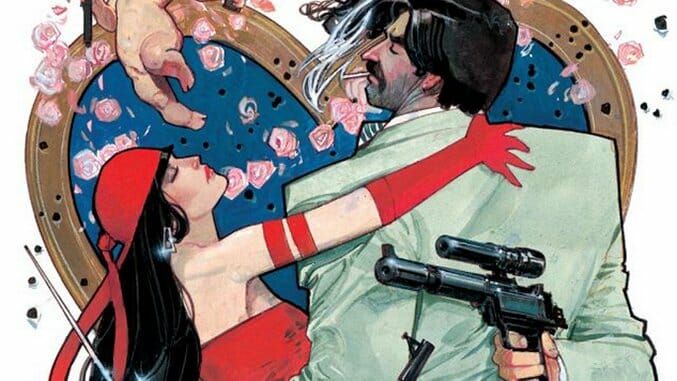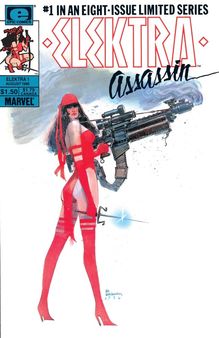Elektra: Assassin‘s Political Satire Cuts Deep 30 Years Later

With their emphasis on supervillainy, comic books are the perfect genre for satirizing politicians who appear dastardly on a good day and demonic on a bad one. Warren Ellis’ Vertigo series Transmetropolitan features The Smiler, a smarmy presidential candidate who makes Eliot Spitzer look like a kids’ cartoon. In the DC Universe, Superman’s nemesis and all-around bad guy Lex Luthor became President a few reboots ago. Current Image Comic Citizen Jack is about a presidential candidate who literally sells his soul to the devil.
But the oft-forgotten classic Elektra: Assassin, written by Frank Miller and illustrated by Bill Sienkiewicz, tackles a similar premise with biting satire and inspired execution. Before you check out the titular Greek ninja in Daredevil Season Two on Netflix this Friday, do yourself a favor and read, or revisit, a story that was both ahead of its time and timeless.
In this 8-issue series, Elektra has a simple, relatable mission: take down an objectively evil presidential candidate who smells like rotten mayonnaise. That candidate—who looks a bit like Dan Quayle but is actually a self-portrait by Sienkiewicz—is Ken Wind. Wind’s slogan, “Not wind like a watch but wind…like the air,” would be creepy enough, but Wind is possessed by the Beast, an ancient evil Elektra knows well from her former membership in the Hand, Marvel’s resident evil ninja clan. Along the way, Elektra escapes from an asylum, telepathically mind-switches with several characters, escapes from S.H.I.E.L.D. and uses ninja mind tricks to enlist the help of Garrett, a sleazy S.H.I.E.L.D. agent who becomes more robot than dude.

Elektra: Assassin Interior Art by Bill Sienkiewicz
I can’t overstate how much fun Miller and Sienkiewicz are having in this series. They’re two virtuoso talents at the peak of their powers, making satiric hay out of politics, government, the military, gender stereotypes and other comic books, which were (and still generally are) weak sauce compared to this. A great example of the overflowing creative energy is the scene-setting news excerpts featured on the inside of each gorgeous Sienkiewicz cover (all of which would look equally at home in a dorm room or art gallery). For example, in the second issue, we learn that the freaky asylum Elektra escapes from is called the Valley of Peace Institution for the Criminally Insane. These articles also feature the only mentions of Soviet Envoy Vladimir Jackoff (possibly a relation of Archer’s Nikolai Jackoff) and Ken Wind’s campaign manager, Henry Swizzle. These little comedic touches show Miller maximizing the comic format and his own fun; they also reinforce that this is a satire above all—and one that couldn’t be much sharper or darker.
The art is as stunning in 2016 as it was in 1986. Sienkiewicz started his career as a brazen Neal Adams imitator, but came into his own in 1984 when he took over the art in New Mutants, merging his previous style with the haphazard chaos of frequent Hunter Thompson collaborator Ralph Steadman and a kinetic exuberance. Elektra: Assassin is probably his masterpiece: the watercolored art is simultaneously seductive and repugnant, much like his first collaboration with Miller, Daredevil: Love and War.


